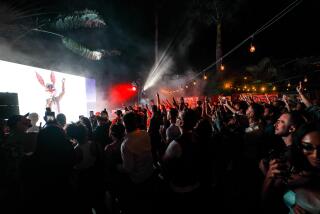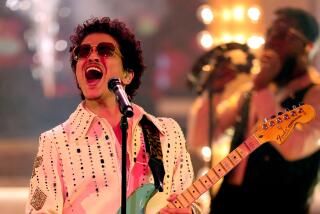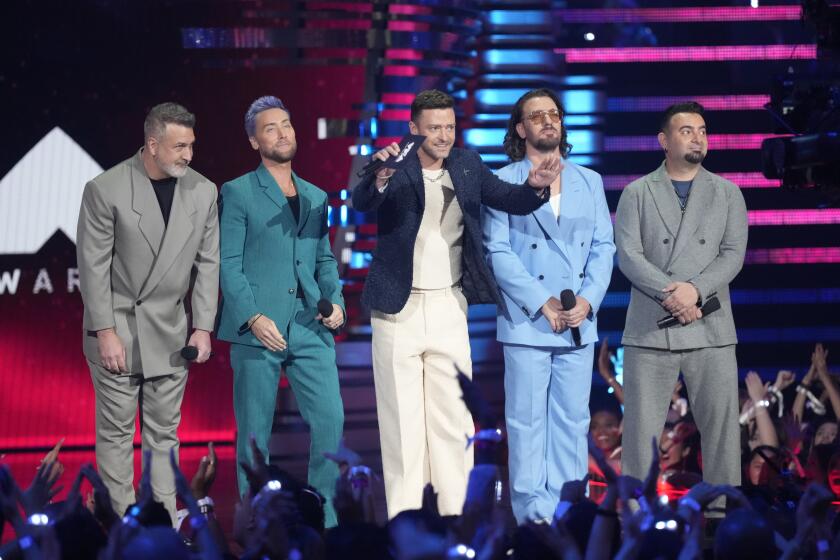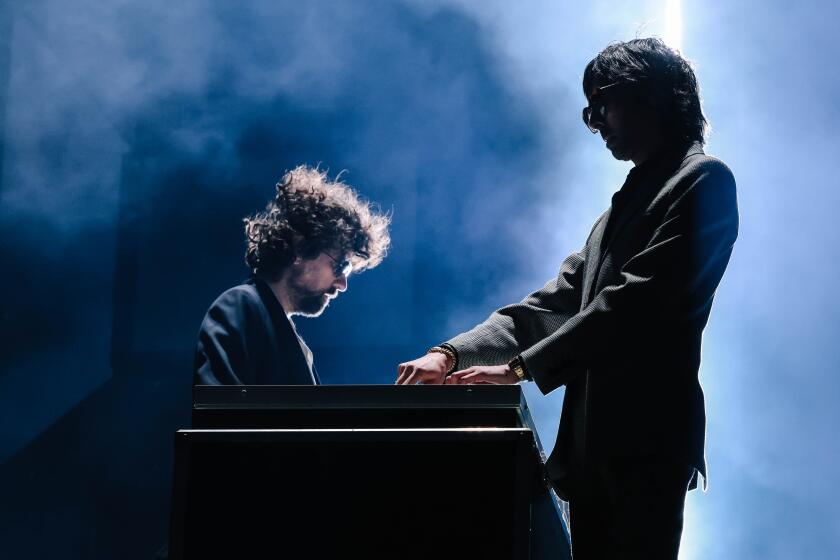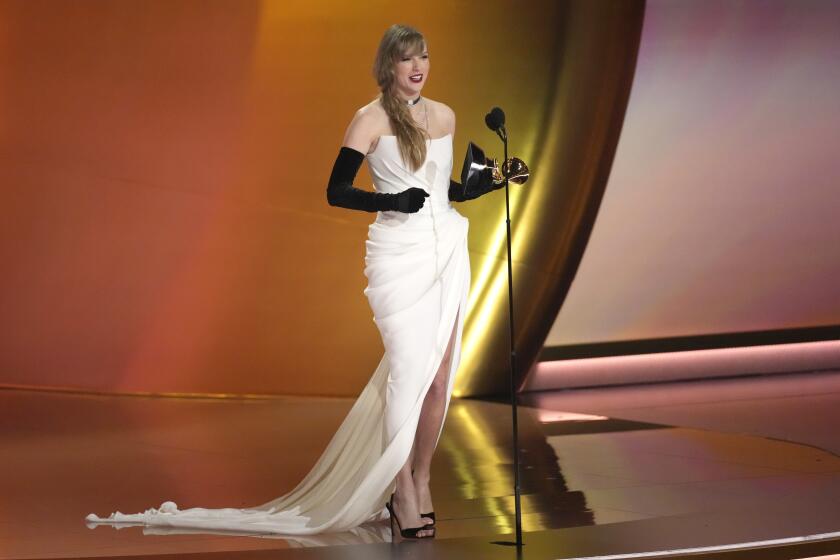The great concert debate: Are cellphones ruining the live experience?
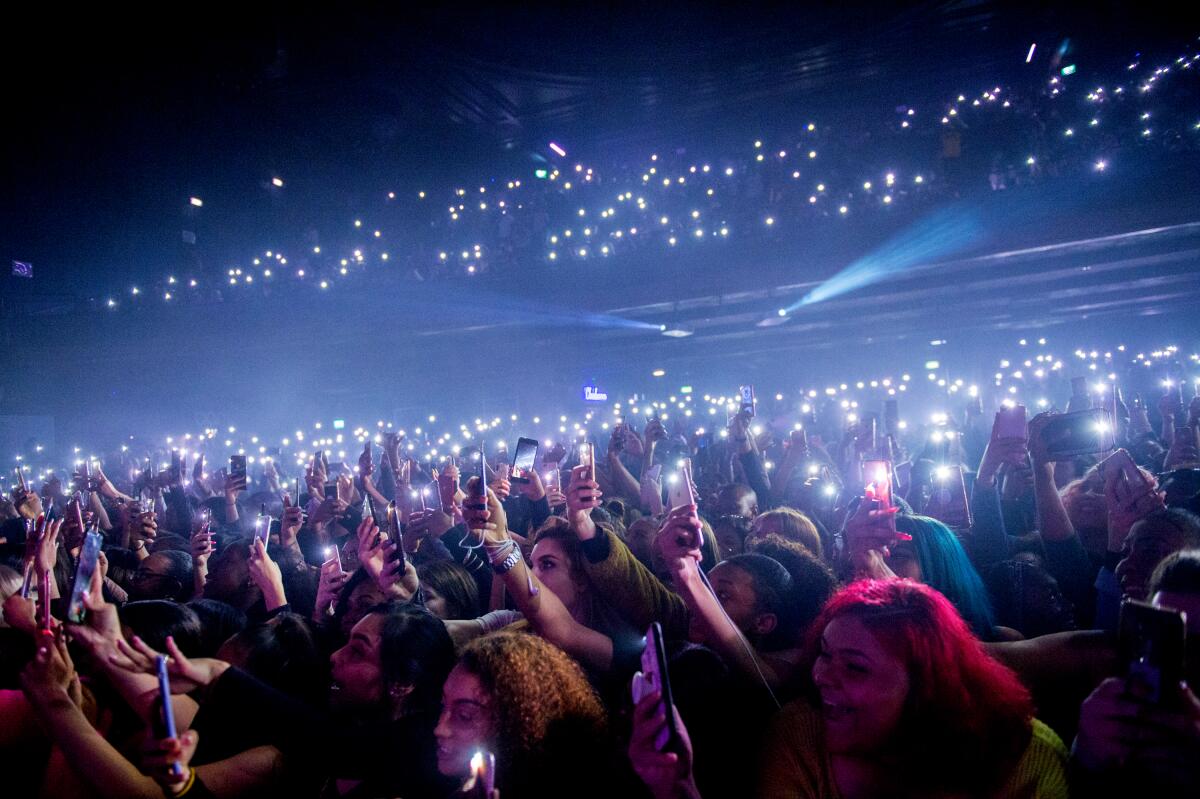
On the opening night of Silk Sonic’s residency at the Park MGM in Las Vegas, Bruno Mars and Anderson .Paak revived some of the best things about the 1970s: warm, sensuous grooves, tailored polyester suits and the throwback joys of an evening without a smartphone.
As mandated by the band, audience members were made to lock their mobile devices in small pouches for the evening, courtesy of a company named Yondr. Once secured in their pouches, they could only be unlocked electronically at a station near the entrance of the venue.
“We’re taking your phones a-way!” Mars sang out to the crowd near the start of the concert.
“That was one of the best parts of the show,” said Margaret Whitener, 51, who attended the Feb. 26 performance. “It’s nice to be in the moment with no electronic distractions, especially during the pandemic, when many are forced to be more connected than ever. And if people can share concert footage online, why would others want to pay to go?”

Due to the COVID-19 pandemic, the live music industry has been operating in fits and starts over the past two years. Artists and fans tried to make due with living-room livestreams and video chats, but with Omicron receding and masking and vaccine requirements dissipating, many acts are now returning to the road, with some seeking respite from a pandemic-exacerbated dependence on technology.
“Being the master of ceremonies and being able to read the room — understand the dynamics of what this room needs to feel like — that feeling goes away when you’re looking at a wall of [phones],” Mars told The Times. “With the cameras, you’re like, ‘I don’t know if I want to try out this dance move tonight,’ or you’re afraid this joke might go on the internet.”
Bruno Mars and Anderson .Paak feared Silk Sonic would never perform live. Now they’re hitting Las Vegas
Graham Dugoni believes this problem far predated the pandemic: He founded Yondr in 2014, after attending San Francisco’s Treasure Island Music Festival the year before. “I kept seeing so many people on their phones, texting other people in other places and then recording someone who didn’t know they were being recorded and violating their privacy,” said Dugoni. “Once the intention leaves the room, it’s hard to get back.”
The business grew throughout the 2010s, as Yondr began to be implemented in schools and courtrooms. Alicia Keys, John Mayer and Jack White became Yondr’s most high-profile ambassadors, opting to use the service on tours. Although the pandemic significantly curbed in-person events, Dugoni is pleased to report that in 2022, business is booming once more.
“During the pandemic, people have become aware that it’s not great to be looking at the screen eight hours a day,” he said. “The ability to step into a space and be temporarily kind of unplugged is valuable.”
From Gayle to Olivia to Demi to Taylor, the Spotify charts are filled with young women gleefully deploying expletives with a newly found freedom.
With venues selling out at levels comparable to prepandemic times, concertgoers are clearly eager to get literal face time with their favorite artists — but their interactions remain, to the frustration of artists, mediated by their phones. Many performers, from Jeff Tweedy to Björk, have asked fans in good faith to refrain from using the devices during concerts.
For the record:
3:12 p.m. March 14, 2022An earlier version of this article mentioned a prerecorded announcement about cellphone use at Mitski’s Shrine Auditorium concert. The message was about masks.
Indie-rock star Mitski, who’s decried the use of cellphones at concerts, performed to a sold-out audience at the Shrine Auditorium on Wednesday night.
Yet the frosty glow of smartphone screens still obscured this reporter’s view of Mitski and her band during her opening number, “Love Me More.”
“They gotta get it for TikTok,” hissed one young man in the crowd.
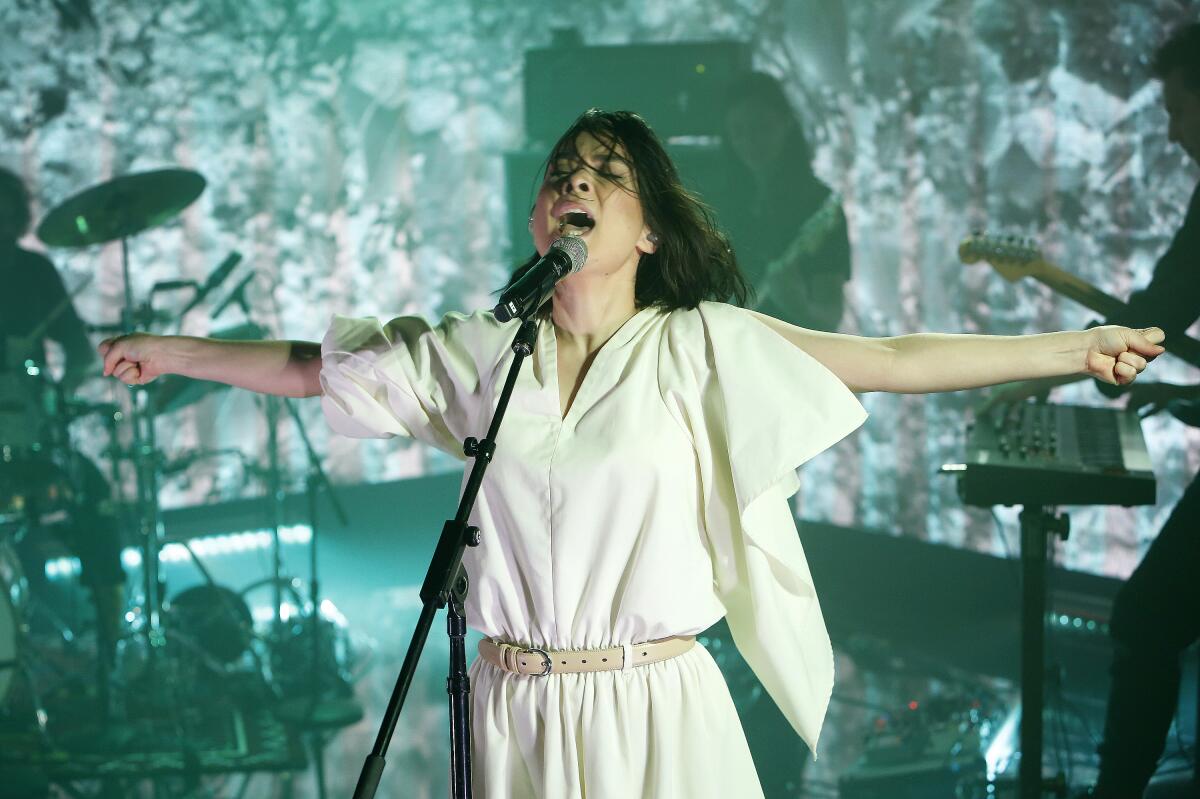
The issue came to a head for Mitski fans in late February, when the artist, who left social media in 2019, posted a rare series of tweets addressing the glut of phones at her shows.
“When I’m on stage and look to you but you are gazing into a screen,” she wrote, “it makes me feel as though those of us on stage are being taken from and consumed as content, instead of getting to share a moment with you.”
While some fans sympathized, others said that smartphones were a necessity for young concertgoers. Some argued that phones helped alleviate issues like social anxiety and dissociation amid big crowds. After a day or two of inflamed discourse between her fans, Mitski’s tweets were deleted. (Mitski declined to comment for this story.)
Among Mitski fans at the Shrine, divisions abounded — and were surprisingly varied across generational lines.
“[Mitski] is at odds with the digital age because she only wants to be performing when she’s onstage,” said writer Chingy Nea, 28, who also attended the show on Wednesday night. “It has to be hard as a performer when everybody would rather be an amateur videographer than an active participant.”
“I think she has such a liberated approach to music-making,” said Rocky, 21 (they declined to use their surname). “I used to record everything, but I realized that whatever satisfaction I [can get] watching those videos, it wasn’t worth the attention I was giving my phone in real-time.”
Krystle, 36, disagreed: “A video is a souvenir, and it doesn’t cost as much as a T-shirt,” she said. “Just don’t use flash and you won’t bother anybody.”
Krystle drove her daughter and niece from San Bernardino to catch Mitski at the Shrine. She’d acquainted herself with Mitski on TikTok. “Social media is important,” said Krystle. “How else are young people gonna know who you are? TikTok is what gets people to come to your shows.”
TikTok had not yet taken off in the United States when Jean M. Twenge, professor of psychology at San Diego State University, began writing her 2017 book, “iGen: Why Today’s Super-Connected Kids Are Growing Up Less Rebellious, More Tolerant, Less Happy — and Completely Unprepared for Adulthood.” Thanks to the platform’s meteoric rise, and subsequent dominance during the pandemic, Twenge says she’s already collecting data on a follow-up book.
“Gen Z was in dress rehearsal for the pandemic,” says Twenge. “They were already going out less. They were driving less. They were already communicating more digitally than in person. They were already depressed. But young people didn’t ask to be born into a world where technology has been designed to be addictive — I mean, it’s done a number on all of our attention spans. I’m seeing more young people speak out against social media exhaustion than ever before.”
The unrelenting demands of social media have many emerging artists, expected to market themselves online with the same fervor with which they make their art, on the verge of fizzling out. In January, electro-pop artist Chelsea Cutler, 25, professed as much in an Instagram post that accumulated over 104,000 likes and support from artists like Maren Morris, Hayley Kiyoko and James Blake.
“I don’t feel like a content creator, I feel like a musician and a performer,” she lamented in her post. “I don’t know how to keep up with how insatiable our content culture has become.”
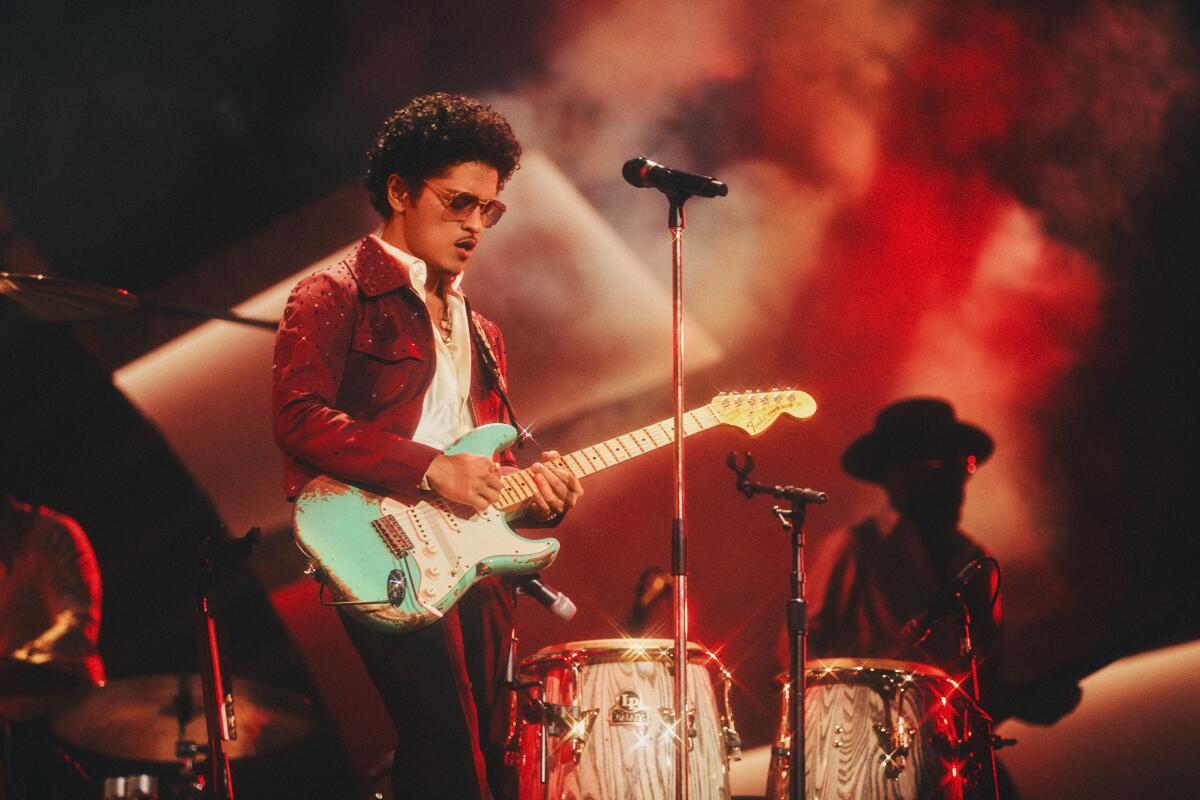
“TikTok is a massive discovery platform for music, but users post 10 seconds of a song in videos, and it goes viral without anyone knowing who the artist is, the story behind it or anything,” Cutler explained to The Times. “It all feels super disconnected. And when we’re in the studio, the lack of attention span these days makes an artist think about writing shorter songs, instead of thinking about the art.”
“[Social media] allowed a ton of talent to break through today who would have never had an outlet otherwise, but I can’t imagine a more difficult time than now,” said Jesse Coren, Cutler’s manager. “The access that fans have to them, the scrutiny, the negative comments and hurtful messages — social media management is an entirely new responsibility for artists, and one that is invasive and comes with a lot of weight on their mental health. It needs to be utilized in today’s music business, it just needs to be done with balance.”
“The point of social media is to make you feel like you should be somewhere else and with other, cooler people,” said Cutler, who has since replaced phone time with surfing and making crafts at home with her girlfriend. “When you’re online, it’s really hard to feel satisfied in your present moment.”
Putting smartphones in sealed bags may seem like a dramatic action to take in what is now the third decade of the internet’s existence, but it’s a concession that some artists believe will bring people together.
“Without phones, there’s no fear involved,” said Mars. “You just get to paint — truly live in the moment. And I think there’s a beauty in seeing something fail and then being able to talk about it with the crowd.”
More to Read
The biggest entertainment stories
Get our big stories about Hollywood, film, television, music, arts, culture and more right in your inbox as soon as they publish.
You may occasionally receive promotional content from the Los Angeles Times.



